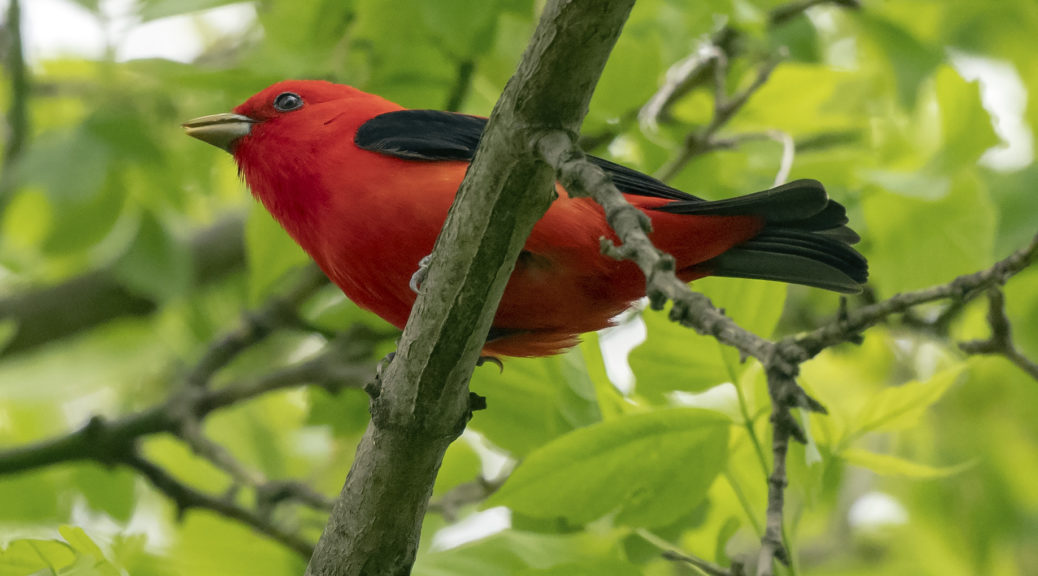A few weeks ago we asked our guides what their spark bird was … and what fun was to read their responses. We sent out a newsletter to our clients so they could read about our guides’ spark birds and asked clients to send us theirs. What a fun response! Take a read below to learn about our guides’ spark birds and the spark birds that got our clients hooked on birding.
OUR GUIDES’ SPARK BIRDS
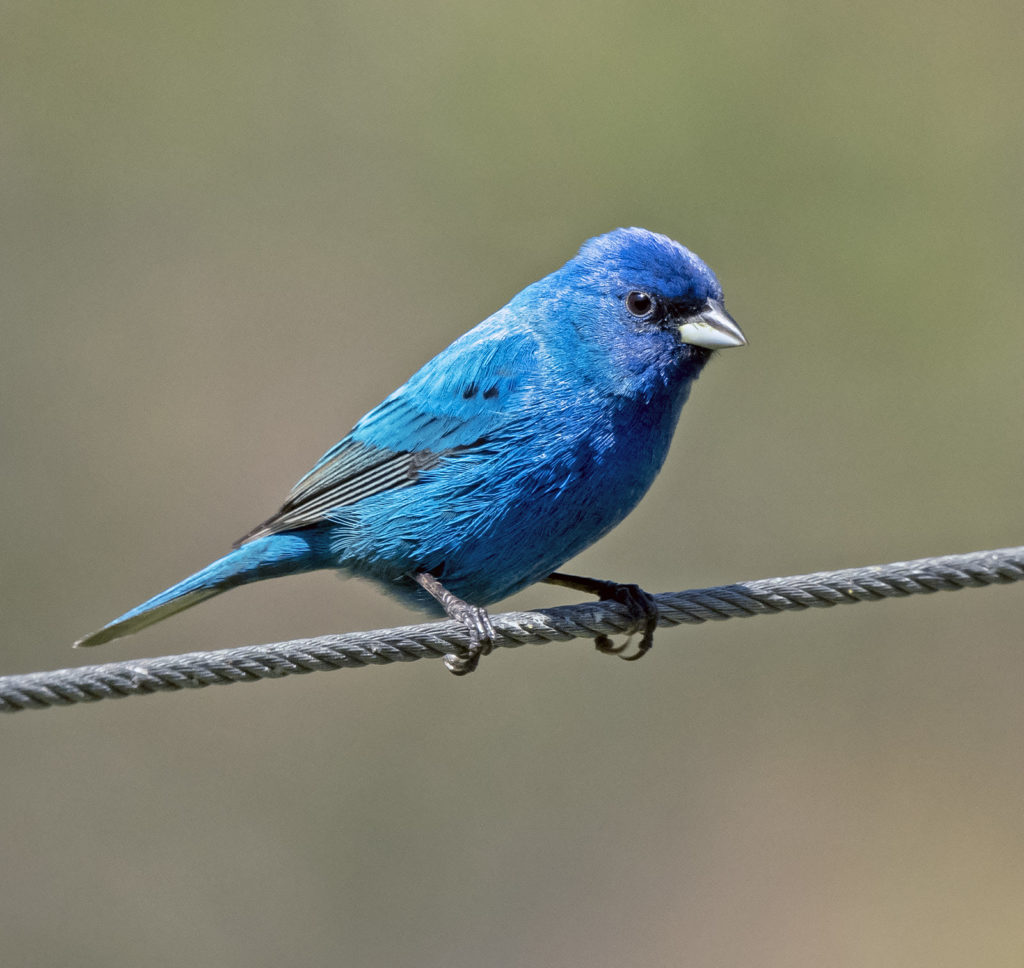
INDIGO BUNTING
“My spark bird was an Indigo Bunting. I was in high school, working two days a week on an internship at a local nature center my senior year. I was engrossed in spring wildflowers and in working on pressing the latest discoveries when my friend burst in and says, you MUST come out and see this! She pointed up and my bins connected with this turquoise gem, throwing his head up in song from the pitched roof of our historic schoolhouse. I was convinced and have been birding avidly ever since.”
— Peg Abbott
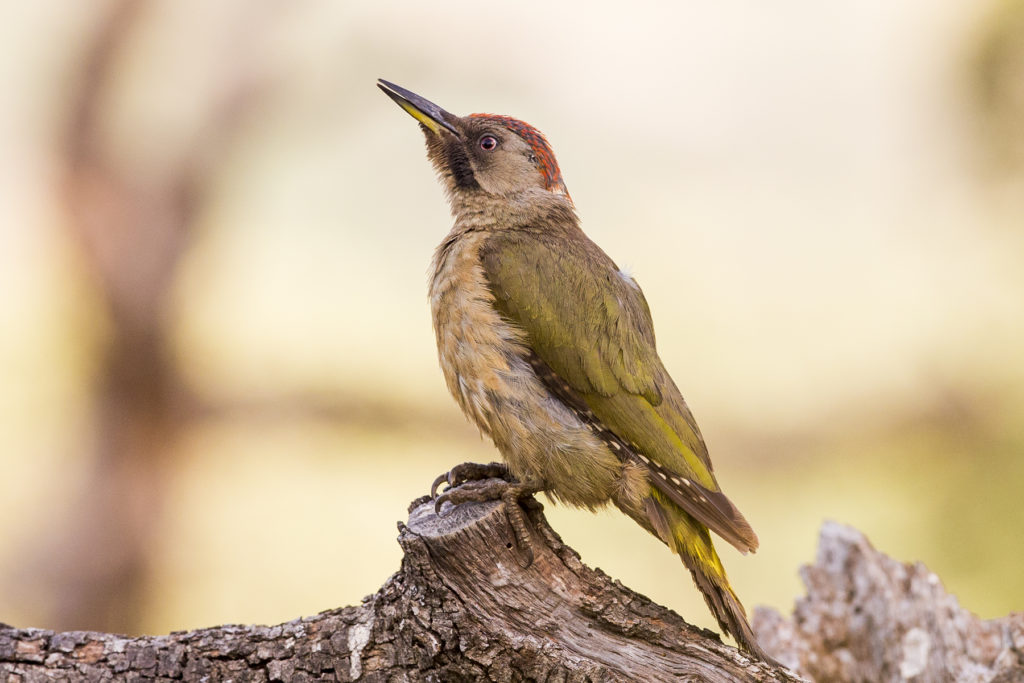
GREEN WOODPECKER
“The (Eurasian) Green Woodpecker was probably the first that got me really hooked. I was on a school trip, aged 9 I think, to the county of Cheshire in mid England (UK) to a big stately home. There were big gardens, parkland with deer, well-groomed lawns. You’ve see those places in TV shows where the lords and ladies sip tea! Anyway, during the lunch break I sneaked off with a pal of mine to try to get close to the deer, we ignored the ‘Keep Off the Grass’ sign and crossed a lawn.
Suddenly a green-coloured bird shot up from the grass, making loud alarm calls as it bounded away before landed again on the grass not on the trees. I had never seen one before but I knew what it was: Green Woodpecker; I looked it up later at home and read that it is ‘often terrestrial and eats ants.’ Wow, a woodpecker that spends most of its time on the ground. I was hooked.”
— Gerard Gorman
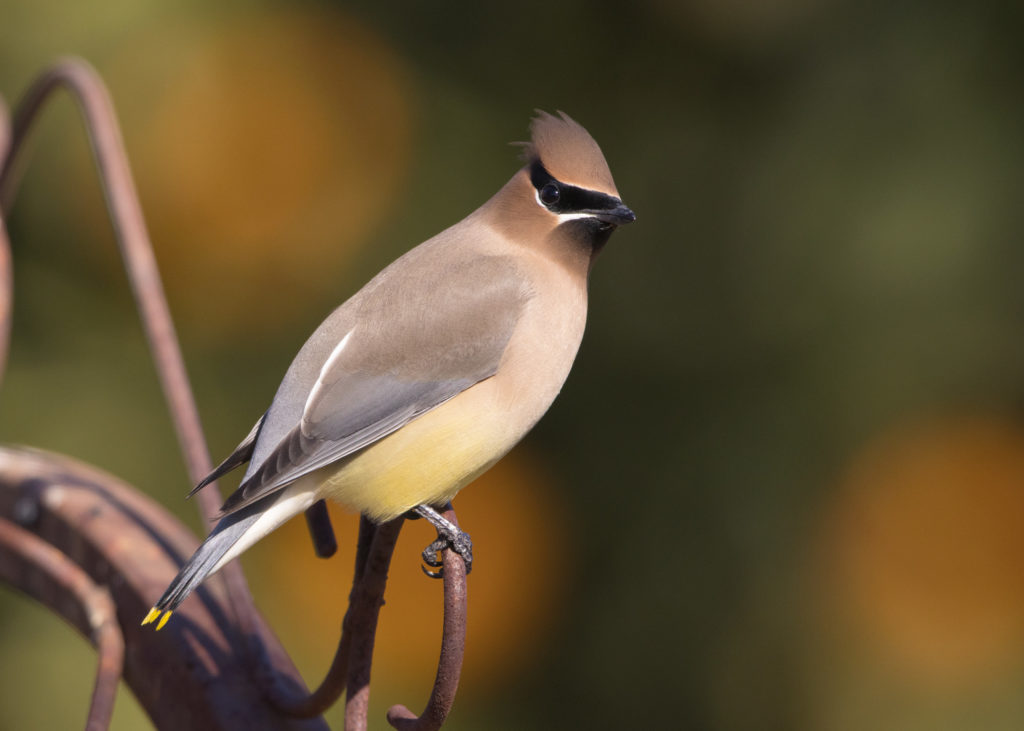
CEDAR WAXWING
“A single Cedar Waxwing.
For a young boy, growing up in the magical woodlands of Maryland, it began with a single waxwing.
Exploring forest next to home, my older brother Rob gathered a wealth of information and experience for his Boy Scout “Bird Merit Badge.” I was always one barefooted step behind him. With his quick keen eyes, and accurate directions, he revealed wondrous beauty to me.
Fresh morning air, slight humidity, spring 1969. Above, a canopy of mixed deciduous hardwoods, below, a lush and diverse under story, found us immersed in what we delighted in the most. DISCOVERY!
Suddenly, there before us, calmly perched, a single Cedar Waxwing. Confiding, exquisitely plumaged, well-tailored, regal. Through my astonished eyes I felt nothing could have been more beautiful. Beholding this gift, dappled in soft sunlight, I stood motionless, gazing at a creature that would have an immense impact upon my life, forever. It was unfathomable to me that anything so exotic existed outside of a book, a zoo, or a jungle, but there it was, gazing back through black mascara bordered by fawn blush.
I made its acquaintance realizing its every subtlety. The appointment of color, the adornment of “wax” droplets on the tips of the wing feathers and an expressive crest crowning the bird, held my undivided attention. From that point on I only wanted to see more.
And so it has been, for my entire life.”
— Keith Hansen

AMERICAN GOLDFINCH
“My spark bird was a Goldfinch. I was out running and a flock of breeding plumage American Goldfinch flew across my path, landing in a small tree. I thought, as many non-birders do, we have canaries in our area? That’s when I started looking at birds differently.”
— Pat Lueders
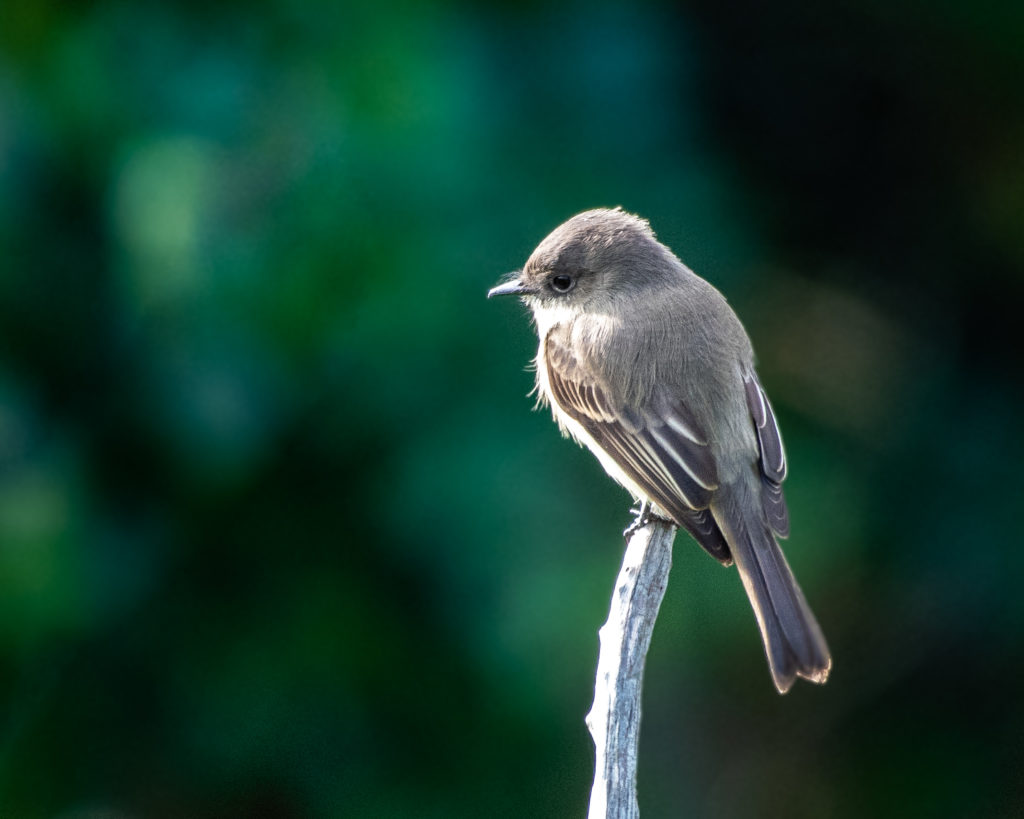
EASTERN PHOEBE
“Which bird got me hooked on birding? So hard to say, since nature drew me in at a very young age. I quickly learned to identify most of the common backyard birds one would find in South Florida from Anhinga to White Ibis. I did not “rediscover” birding until right after college, after walking to a local park and seeing an Eastern Phoebe perched on a fence. The thrill of seeing something I had studied in a book beforehand, researching and learning about it, then seeing it in the flesh—well, I was hooked again!”
— Carlos Sanchez
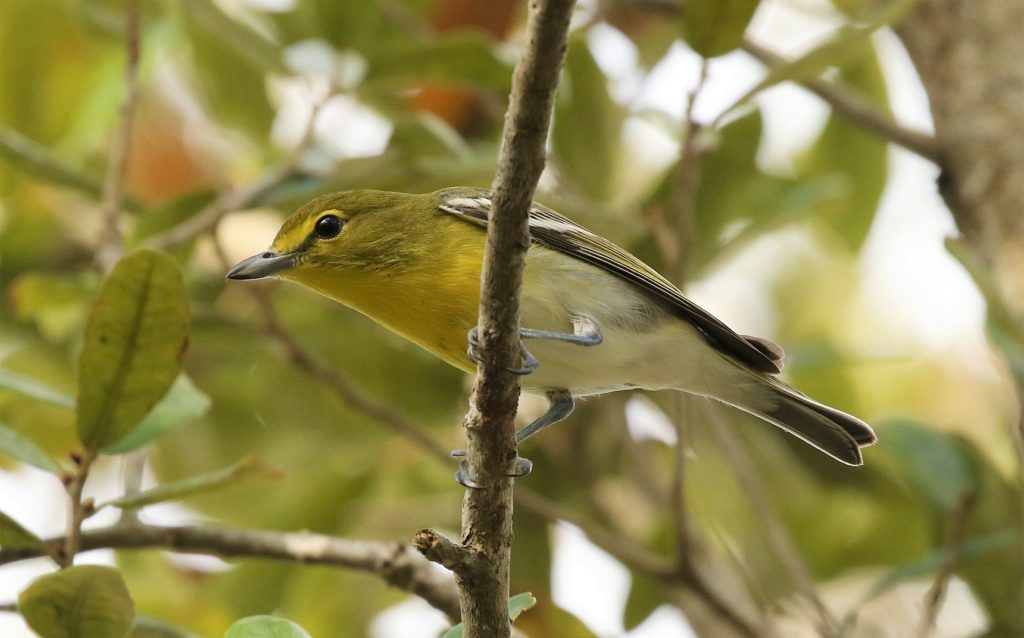
YELLOW-THROATED VIREO
“I had been birding (far beyond my general enthusiasm for the whole of the natural history world…) for just over a year with Jim, who had recently moved to the Central Coast of California. Jim got me into looking at birds, the smaller birds, you know, the ones way up at the tops of the trees. And with all the vagrant traps on our patch of the coast, we were having a blast finding all sort of migrants that fall, including an exceptional nice mix of vagrants.
Jim had invited a number of friends from the Central Valley to join us on the coast and bird some of our favorite vagrant hotspots on 3 October, 1981, the peak of fall migration. So early that morning we met Keith Hansen, his brother Rob, Dawn, Gary and others and started north from Morro Bay. Most all of us were in our twenties, and the energy was palpable.
And it was that energy that made it one of the most memorable days of birding for me. Along with hordes of western migrants, we had a sublime group of eastern vagrants at every stop that morning. But the bird of the day that gave us all a lot of “Green Valley grins” was that Yellow-throated Vireo at Pico Creek, just glistening in the bright, early morning sun…”
— Greg Smith
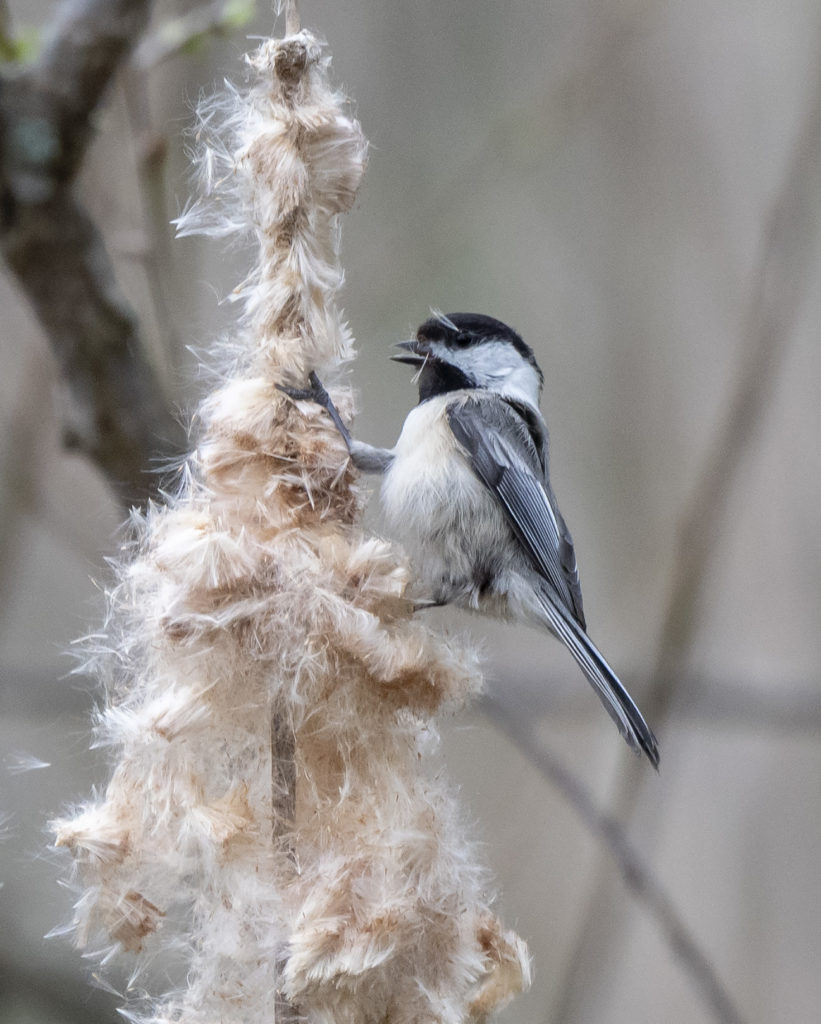
BLACK-CAPPED CHICKADEE
“My spark bird, the bird that got me hooked on birding: Probably the Black-capped Chickadee. When I was a teenager my dad would take me hunting and I’d tag along, not so much for the hunting part but because I liked to be in the woods and spend time with my father. I remember one cold morning being in a tree stand waiting for a deer to walk by and being surrounded by silence and then …. chickadees. They were landing on branches all around me and even on the railing of the tree stand.
Since then I seem to have a magical connection with them. I’ve pished them in close many times, had them answer my chickadee call, and even had one land on my hand and try to pull a hair out of my knuckle. They are in New Jersey all winter and always bring a smile to my face when they land on my feeders.”
— Rick Weiman
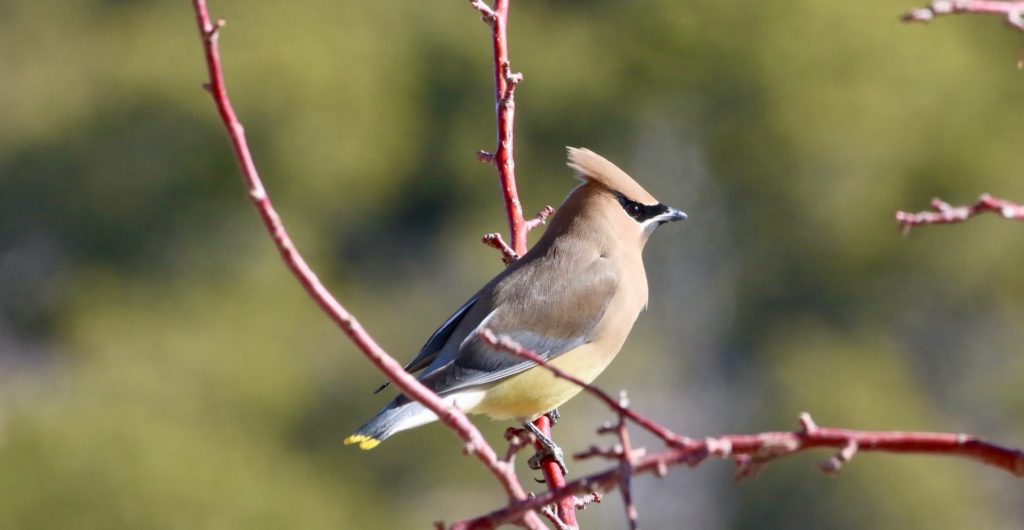
CEDAR WAXWING
Woody describes his first spark bird in his blog post on Conservation Catalyst:
“Long ago, a Midwestern boy was assigned patrol duty at his elementary school. His crossing was the farthest one from the school in a peaceful area overhung by crabapple trees. One fall morning during a lull in crossing activity, he noticed birds moving through one of the Crabapple trees. Upon closer investigation, he saw a dozen gorgeous yellow and brown-cast birds with crested heads and brilliant red and yellow accents feeding on crabapples. The birds seemed tame.
Early the next morning, he rode his bike to his crossing and found several trees swarming with even more of these birds. He got to within ten feet of them as they feasted on crabapples. He stood transfixed for an hour.
After returning home, the boy searched through the family bird book and found the birds he had been seeing close up and by the dozen. They were Cedar Waxwing.
There was something intoxicating about all of this. Later in life, he discovered that because the birds were eating over-ripe crabapples, they were indeed intoxicated. This made them tame.
This boy has been watching and studying birds ever since. As you may have guessed by now, this boy was me.”
— Woody Wheeler
OUR CLIENTS’ SPARK BIRDS
We’ve kept our clients’ spark bird stories anonymous for their privacy.
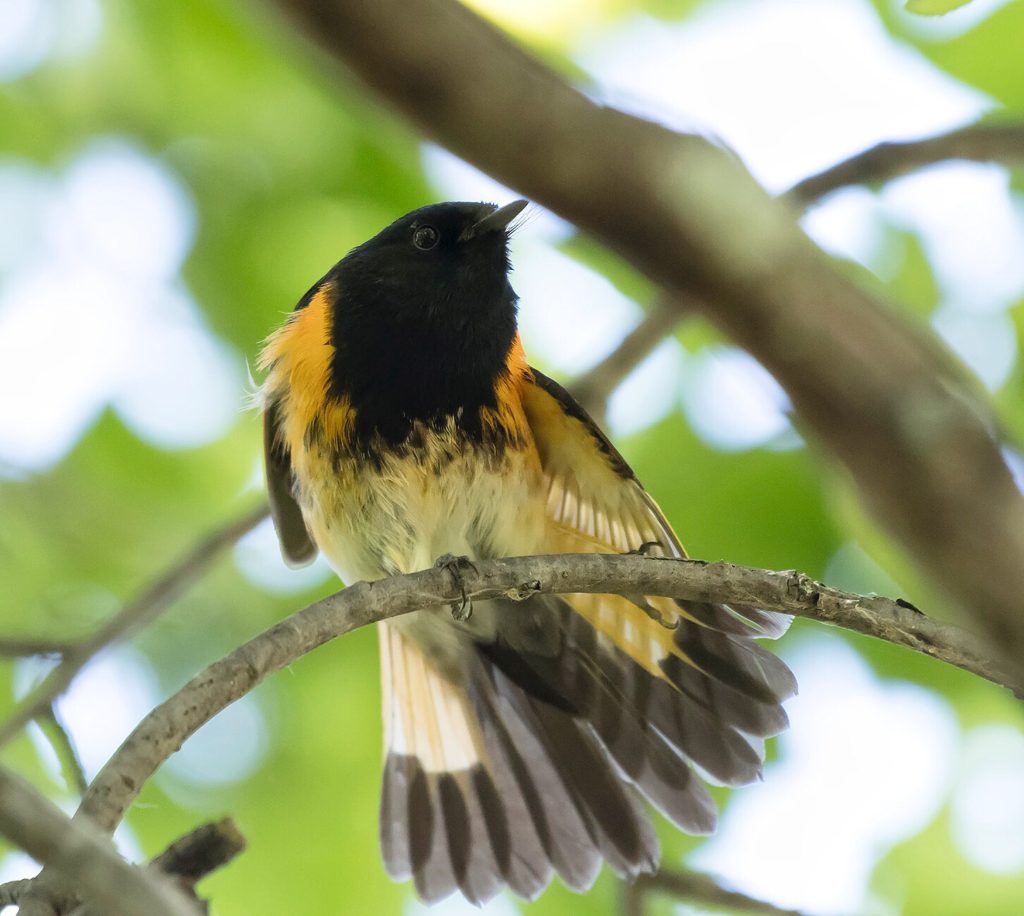
AMERICAN REDSTART
“The spark bird for me was a disaster. I was in my pre-teens and living in Chicago in the old community of Pullman and had ridden my bike to what was known as the dump. It was actually an industrial land fill in the wetlands and prairie areas near Lake Calumet on Chicago’s far south side. While wandering about I spied a bird on the shore of a small pond. So I did what kids do, I threw stone at it. I hit it. And killed it. I was devastated and fascinated by the beautiful animal I had destroyed. It was either a Mourning Dove or Killdeer. I can’t recall. But I never threw another stone at another bird. My deed haunted me.
But then an epiphany occurred for me. A few years later while working on a landscaping project in a well-tended yard in a well-tended residential neighborhood the world of birds opened up for me in the flash of a Redstart darting amongst shrubbery right in front of my nose. WOW. What was that. Where can I find a book? Holy cow, I wanted more. I was hooked. But it sure was an odd situation being the only birder in a 1950s big city blue collar high school.”
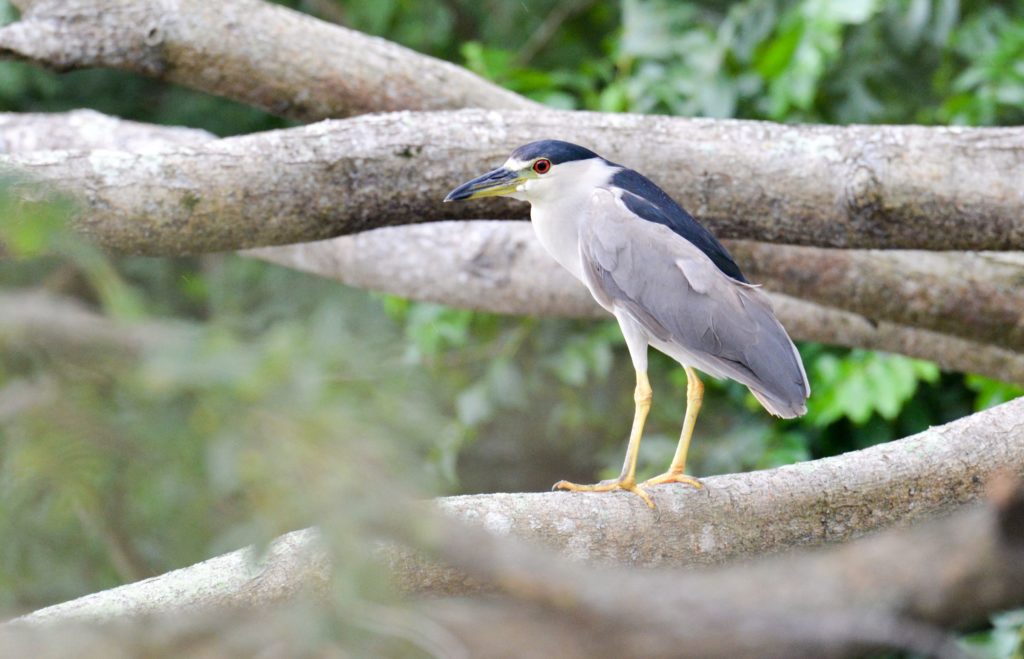
NIGHT HERON
“When I was in grad school at UNC, my boyfriend taught me about birding. I wasn’t hooked yet though. I couldn’t even tell you the first birds I observed. But then we took the long drive to the Everglades. At the first pond, there was an immature night heron. After identifying it on my own (with a field guide of course!), I was hooked. I mean, really … that red eye!”
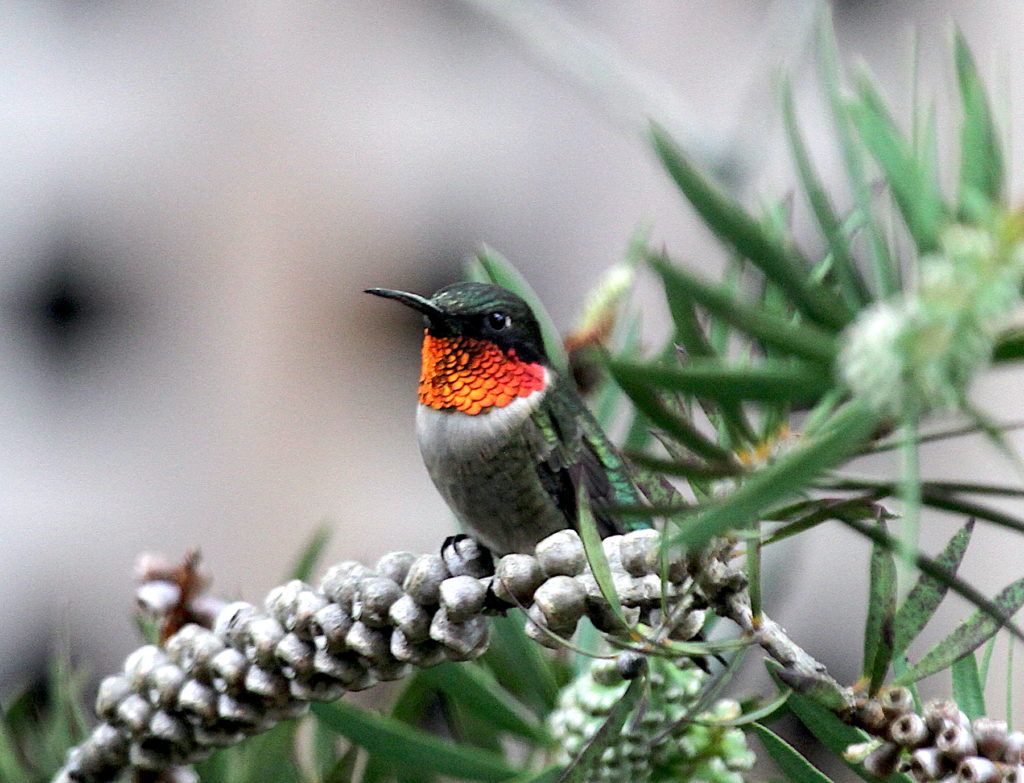
RUBY-THROATED HUMMINGBIRD
“I guide here in the DC area and my spark bird is the Ruby-throated Hummingbird. I was the gardener at our school and I wanted them to come over the roof of the school and into the courtyard. I planted Bee Balm in a large 4×4 bed, then set a feeder with fresh sugar water in a red-colored dish-like feeder. I kept it clean. They came early much to my joy and I got a video of the bird scaffolding from the Beech tree to the feeder. I set up a presentation in power point for the after-school kids and talked about how scientists found out how they fly.
We still don’t know how they hover. Physics students from UC Davis were having a break on the patio at the school when they saw some Hummingbirds and wanted to know the physics of their flight. They made an experiment and they filmed it. The middle schoolers were fascinated. They were happy to see that we had hummingbirds coming to the school. It was a treat. I will always be surprised by these tiny but mighty birds.”
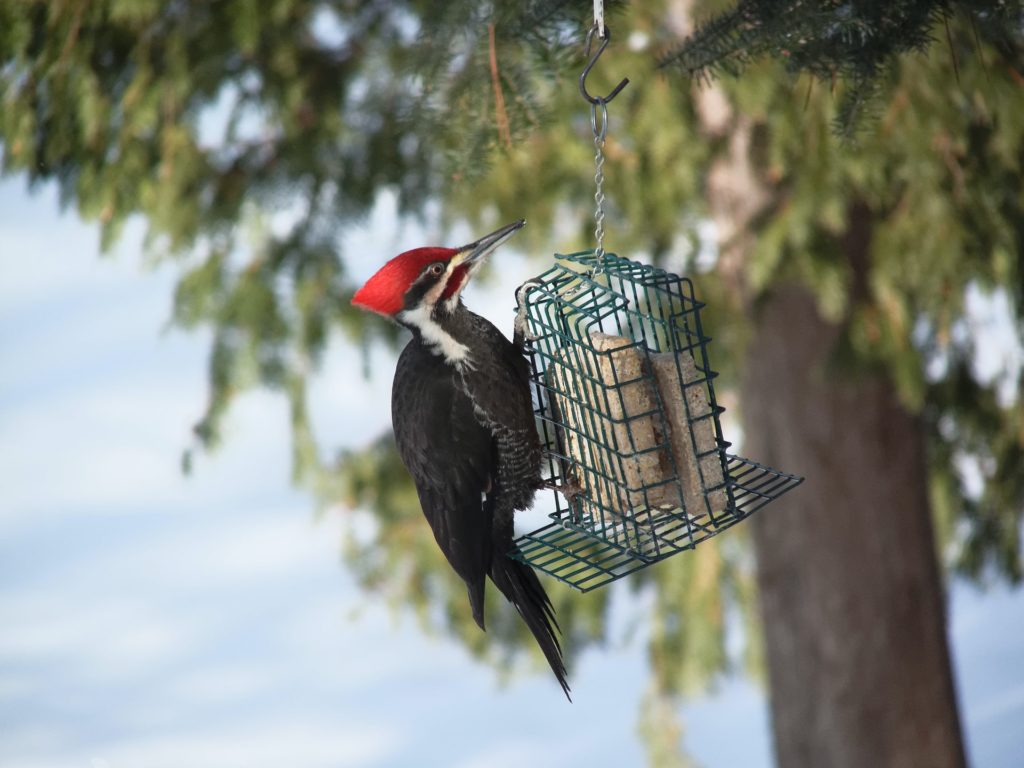
PILEATED WOODPECKER
“My ‘spark’ to birding (never heard that one before) was many years ago, as a young teenager, early 1970s, when an older family friend, in upstate New York … who knew Roger Tory Peterson (too bad I never met him!) took me out for birding in the summer, Catskills, wee hours … and my first Pileated Woodpecker, so spectacularly beautiful, that was it, I was hooked … birding ever since, in a fun way, even now easy to do in Virginia, without any crowds!”
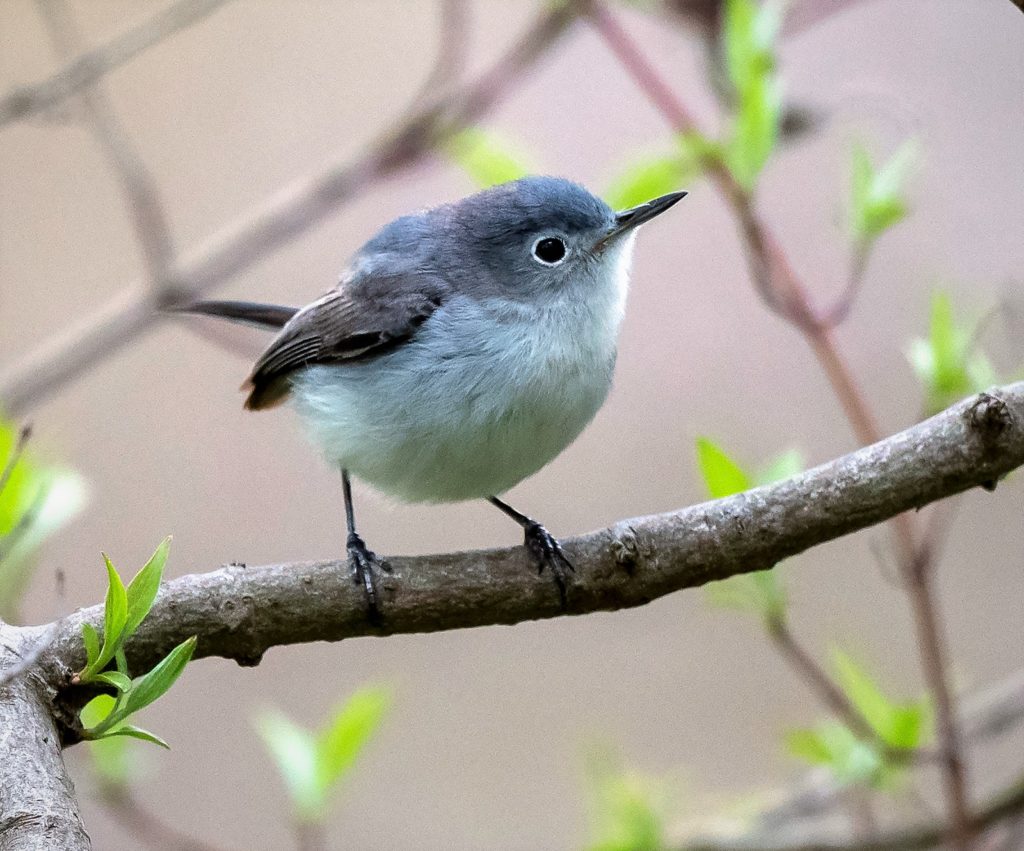
BLUE-GRAY GNATCATCHER
“I grew up with a father who was an avid amateur ornithologist so (by osmosis?) I was pretty familiar with common birds of Massachusetts and was accustomed to noticing birds even though I was hardly a birder. In my early 40s I was sitting on our deck in the mountains of North Carolina with my leg propped up as I recovered from minor surgery. I noticed a small active bird in the shrubbery in front of me.
With nothing better to do I went and got binoculars and eventually identified the bird as a Blue-gray Gnatcatcher. I was quite surprised that I had never even heard of this bird, let alone seen one before. Right there in my yard was a bird that was new to me! That got me wondering what else might be around and things took off from that.”
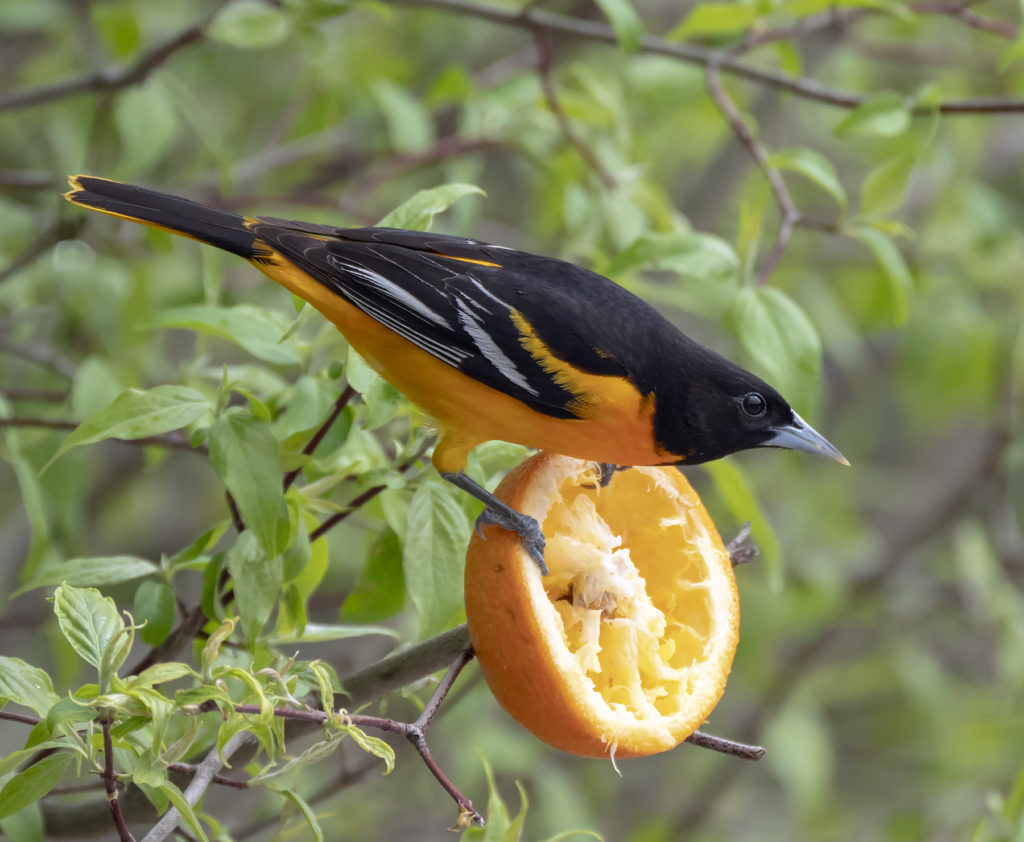
BALTIMORE ORIOLE
“My father was a birder. It didn’t catch on with me right away (I was really into snakes earlier). Then in the spring of 1953 a pair of Baltimore Orioles built a nest in the willow tree in our backyard. I had seen pictures of them but never expected to see them in person. After all, they were Baltimore Orioles, and we lived in Massachusetts. I was thrilled to have such colorful birds nesting in our backyard. From then on I started looking through field guides, and I was hooked!”
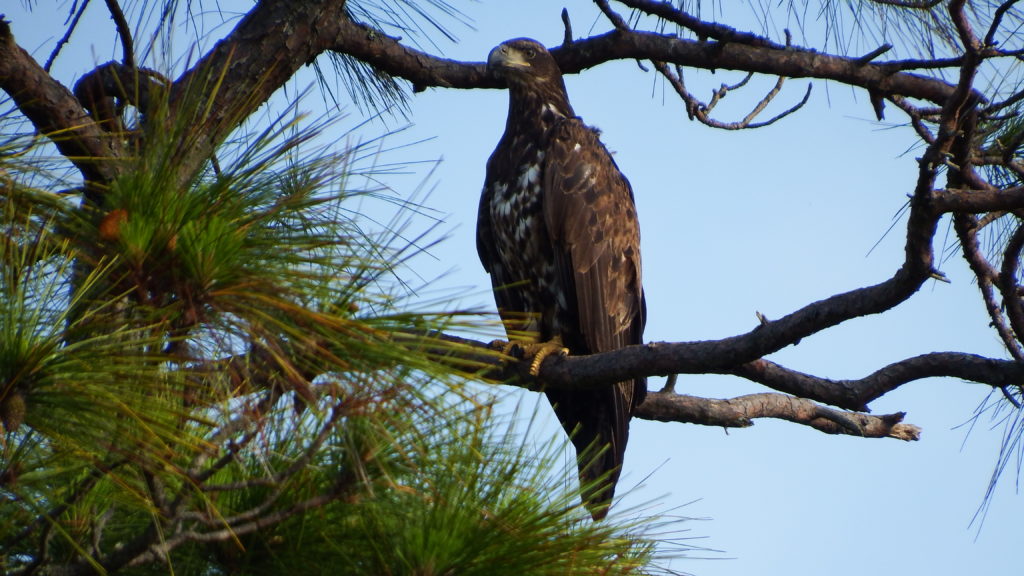
BALD EAGLE
“When I was in college, I was home for Christmas break. I was invited by a family friend to attend the Christmas Bird Count in Butte County, California. I had never been particularly interested in birds but I thought, what the heck, I didn’t have anything better to do. I figured I would just go for half a day. However, I couldn’t believe how fun it was and loved the whole day.
A couple of days later, I got to go birdwatching again with the trip leader, Eleanor Pugh, who was a pretty renowned California birder. We went to the Oroville Forebay, and she spotted a raptor in a tree and set up her scope. She looked through it and said, ‘I’ll let you all look at the bird and see if you can figure it out.’ Lo and behold, it was a mature Bald Eagle. We all got a great look at it, and then it took off and flew right over our heads.
This was a transformational experience for me. Not only did I become a lifelong birder, but I suddenly knew I cared deeply about the environment. I didn’t exactly know what I wanted to do for a living, but I knew I wanted to make a difference. I became a land use planner and helped implement the Coastal Act in Sonoma County.”
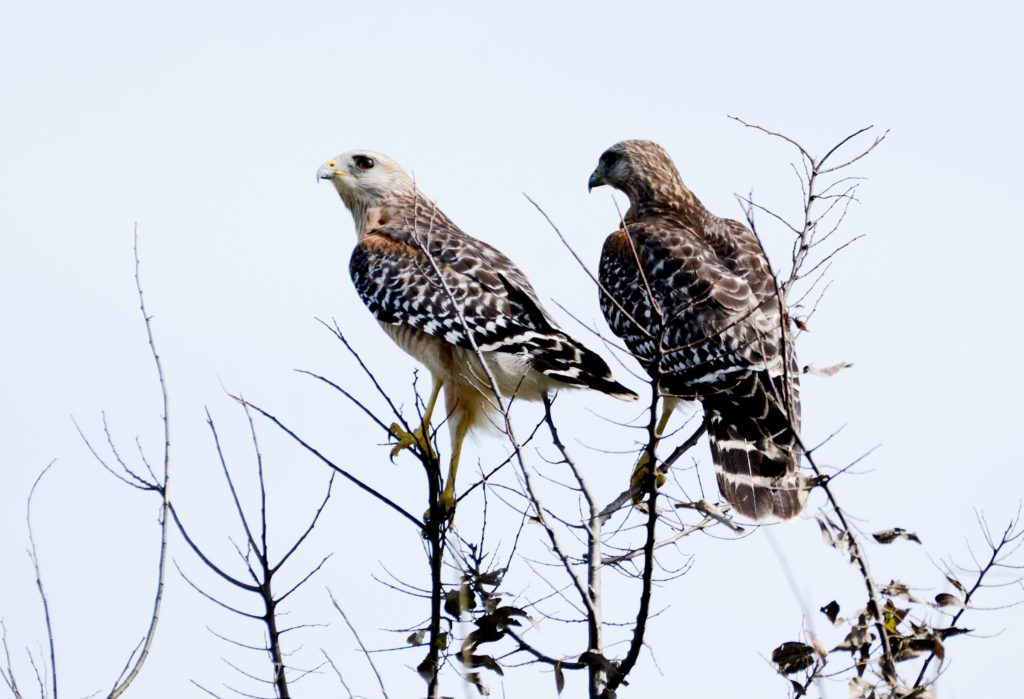
RED-SHOULDERED HAWK
“A Red-shouldered Hawk—seen on a vacation to Florida in 1993, in a state park in the center of the state. It was at face height, about 15 feet away, observing me and not afraid. So beautiful. I had no idea what it was. After the trip I asked a client of mine who birded with her husband, what it might have been. From her suggestions, the Red-shouldered Hawk was the right bird.
I told my husband, I really liked looking at birds, and I want to keep doing it. We found the Audubon Society online, and by good fortune, the San Fernando Valley chapter was very active with 10 field trips every month. We started coming on the field trips, standing next to someone with more experience, and in a few months we were totally into birding. My husband at first felt that it was going to be an activity for old ladies, but when he came to a field trip, he saw it was about 50% men, and they were typically competitive like men in most sports. BTW, we were both in our early 50s already.”
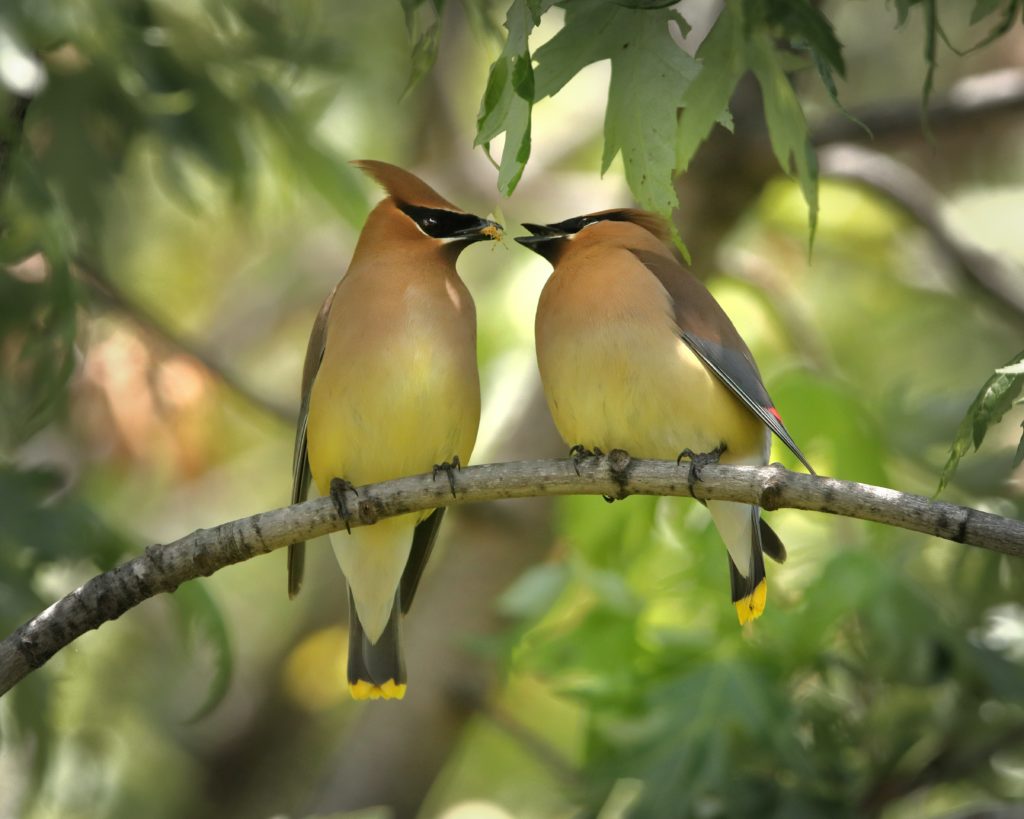
CEDAR WAXWING
“So, what is it about Cedar Waxwings? Two guides said they were their spark bird, and I smiled when I read that, because they were my spark bird at a very young age. Whole flocks of them used to descend on the toyon bushes of our Southern California house. They were magnificent, albeit a little reckless if they ate berries that had fermented on the bushes!”
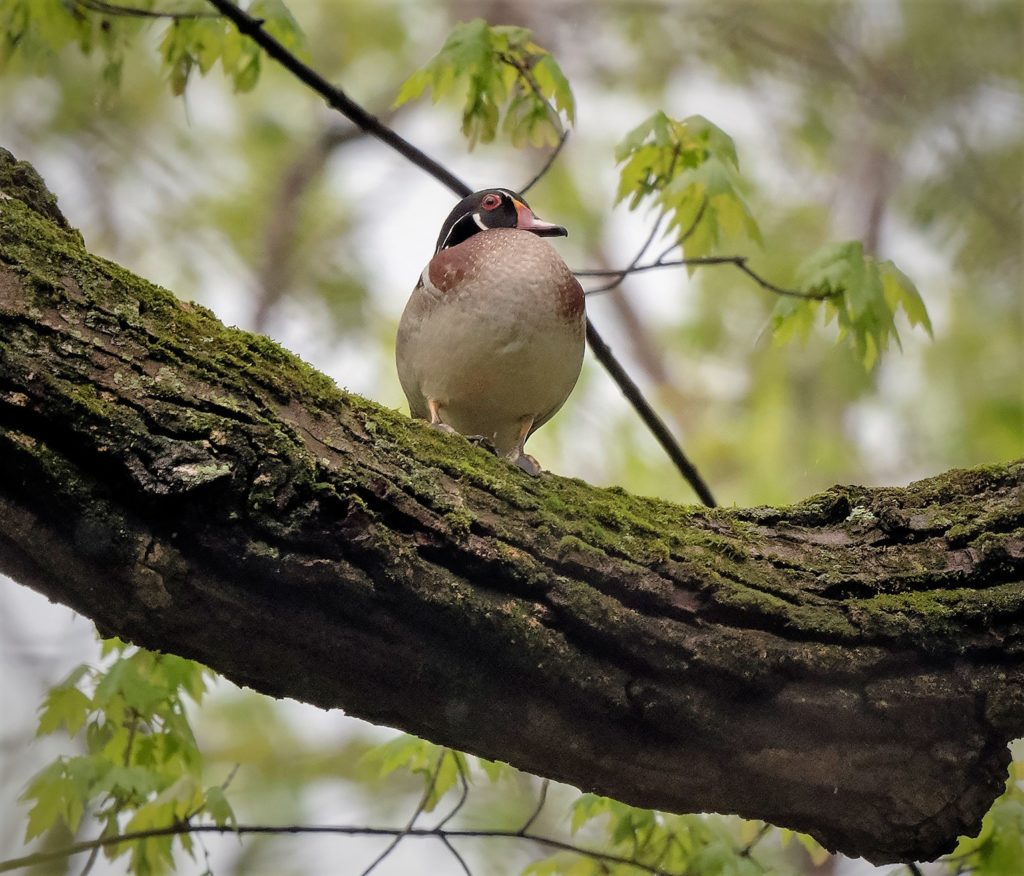
WOOD DUCK
“My spark bird was a Wood Duck. I was running past a small pond in the Berkshire in Massachusetts when I noticed a family. That was it—I was off and traveling the world.”
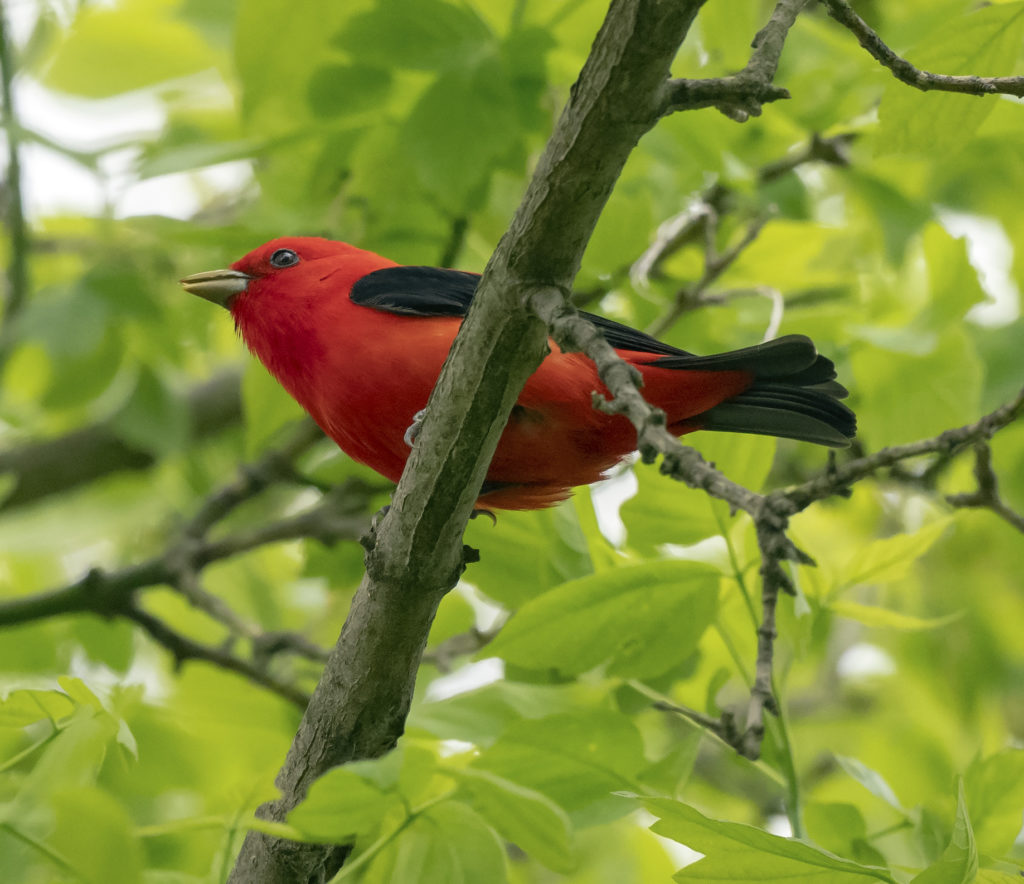
SCARLET TANAGER
“Seen from our boat on the dappled creek shore was a bird that caught my attention. It was a gorgeous deep red, with jet black wings. Searching my memory banks for its identification was no help so soon thereafter I bought a field guide. The first of many, many, many books and a now 30 year avocation feeding, watching, traveling, and learning about birds.”
Naturalist Journeys is pleased to offer birding and nature tours to all seven continents. Start planning your next adventure.
www.naturalistjourneys.com | 866-900-1146 | travel@naturalistjourneys.com

